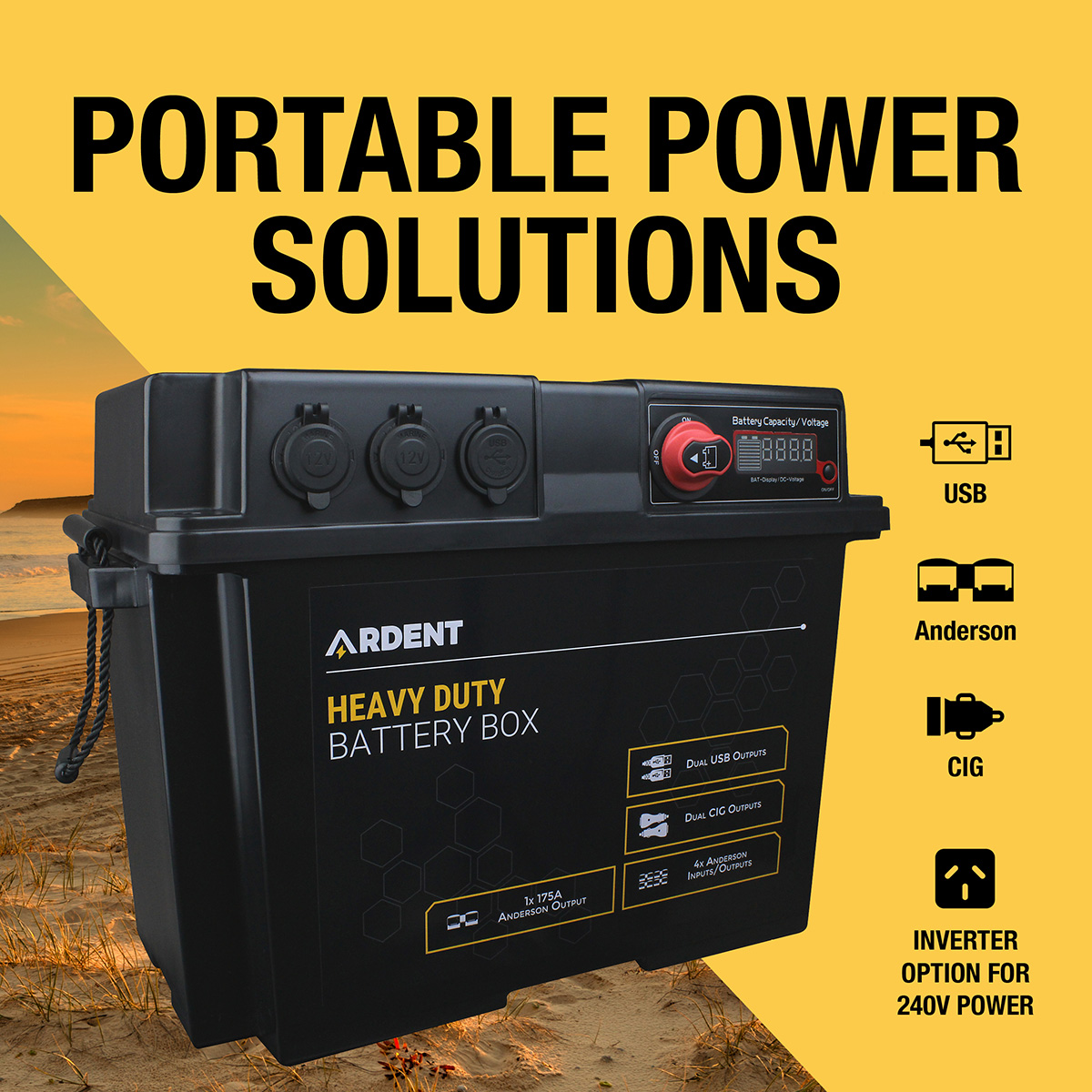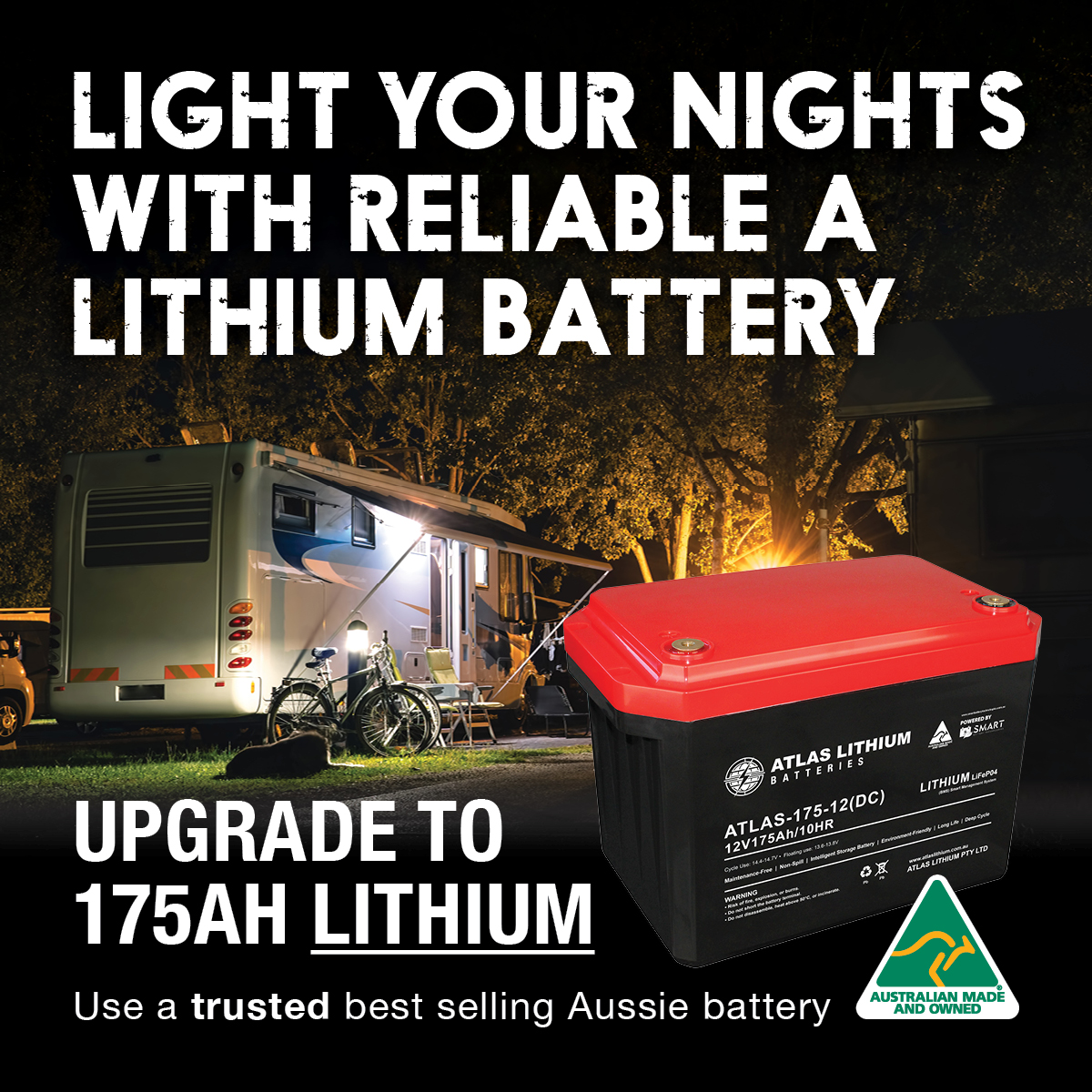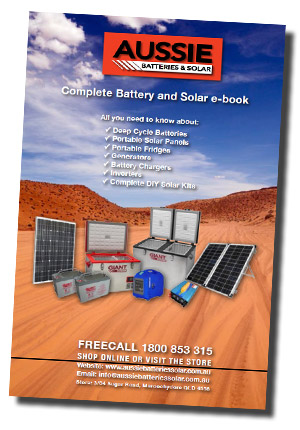Deep Cycle Battery Guide
.jpg) DEEP CYCLE BATTERY GUIDE
DEEP CYCLE BATTERY GUIDE
LEARN ABOUT THE BEST DEEP CYCLE BATTERY FOR YOUR SETUP - AGM & LITHIUM DEEP CYCLE BATTERIES GUIDE
Learn more about the best Deep Cycle Batteries for Solar, Camping, Caravan, Camper Vans, Camper Trailers, Motorhomes, Marine, 4WDs, RV's & Off Grid Solar with the experts at Aussie Batteries and Solar WWW.AUSSIEBATTERIES.COM.AU
This guide answers our customer's most frequently asked questions about Deep Cycle Batteries. This guide includes information on how AGM and Lithium deep cycle batteries work. And you can learn about deep cycle battery terminology. Learn more about the different deep cycle batteries used in renewable energy storage systems and develop your understanding of the different Deep Cycle Battery chemistry types such as Gel Deep Cycle, AGM Deep Cycle, Lithium Deep Cycle Batteries, and more! If you need expert, no-obligation advice about Deep Cycle Batteries, you can Free Call 1800 853 315
Deep Cycle Batteries Guide for Energy Storage - What is a Deep Cycle Battery?
If you're looking for a battery for solar and renewable energy or a battery for camping applications, you're looking for a Deep Cycle Battery nine times out of ten. A Deep Cycle Battery comes as an AGM battery or Lithium battery and is the best battery for Solar, Camping, Caravan, Camper Vans, Camper Trailers, Motorhomes, Marine, 4WDs, RV's & Off Grid Solar because Deep Cycle Batteries are very efficient energy storage units that allow you to store and use power!
> WHAT IS THE BEST DEEP CYCLE BATTERY FOR CAMPING ?
For 4×4 or recreational use and any solar camping setups, the best deep cycle battery has traditionally been AGM Batteries due to their price. For the best battery performance and serious off-road adventure enthusiasts, Lithium Batteries are currently the best deep cycle battery option your money can buy. Both AGM and Lithium Deep Cycle Batteries work when a chemical reaction develops a voltage that results in electricity. Deep Cycle Batteries are designed to be 'cycled' (discharged and recharged). Hence, while a car battery aims to deliver a burst of energy for a short period, a deep cycle battery gives power at a steady rate for an extended period. In the context of renewable energy, batteries usually mean deep cycle batteries. The two best options for deep cycle battery power are AGM Batteries and Lithium Deep Cycle Batteries are presently the best because of their weight and ability to draw more power from the battery cells.
Can I Use Solar Panels to Charge My Deep Cycle Battery?
YES - in fact any type deep cycle battery can be charged with solar panels. Make sure to use a solar charge controller for deep cycle solar batteries to regulate the charge or add an Ardent Battery Box with Anderson Plug Connections. **An Anderson style plug is a moulded, heavy-duty connector designed for high current 12V circuits. They are commonly used to create a safe and secure power connection between a battery and the solar panels. Indeed, most caravans and campers these days have an Anderson style plugs installed from factory. For Lithium Deep Cycle Batteries you need to make sure the open voltage of the solar panel is below 18V for a 12V battery. It is best if your solar panel has a voltage regulator to stop charging at 14.4V or (LiFePO4) setting of 14.6V.
If you charge your lithium deep cycle battery above 15V for 12V battery, the BMS inside the battery terminal will turn off.
The cut-off voltage settings will vary slightly depending on current levels, temperature and part tolerances. To turn ON the battery again, disconnect the charging source and let the battery rest for several seconds (~30 sec). In the event the 12V battery had voltages higher than 18V when turned off, the internal BMS could be damaged and will not turn ON.
Can I Start My Car With A Deep Cycle Battery?
NO - Deep cycle batteries aren’t designed to deliver high currents to start a car. Using one could damage the battery or the car. Make sure you stick to a starting battery for this purpose.
Can I Connect Different Deep Cycle Batteries?
NO - Try to only connect batteries of the same type, model, capacity, and age. For example, if you want to connect your deep cycle battery with another one to increase power output, make sure the second battery meets the mentioned criteria.
Why is the cheapest eBay battery not your best option? Every year, we speak to hundreds of customers who find out that eBay may be a great place to get a quick bargain. AGM Batteries or Lihium Batteries are one of the products that you are much better off getting from a reputable retailer like Aussie Batteries, who can provide you a competitive warranty and exceptional technical support.
> WHY UPGRADE AGM TO LITHIUM DEEP CYCLE BATTERIES ?
Lithium ion batteries are 50% lighter than AGM batteries and have a usable capacity of 90 -100%. They also have the fastest recharge rate and extremely long cycle life — often around 2000-5000 charge cycles. A LiFePO lithium Ion deep cycle battery also offers constant voltage over any rate of discharge. This means your lithium battery powered camping lights won’t dim slowly as the battery loses charge. Once there’s no more power, the lights will just go out. The most recent type of lithium battery is Lithium Iron Phosphate (LiFePO4). LiFePO4 batteries are frequently used in deep cycle applications — such as solar energy banks and backup power systems. A quality lithium deep cycle battery is lightweight, compact, maintenance-free with excellent usable discharge capacity, fast recharge rate, and constant voltage. However, it’s much more expensive than AGM batteries and you need to make sure it has a superior battery maintenance system (BMS).
**Note: In a LIthium Deep Cycle Battery the BMS monitors the battery’s state and ensures the safety of operation. All Aussie Batteries Lithium range are equipped internally with superior BMS systems up to 150AMPs allowing users to get max power!
 100% Environmentally-Friendly Energy
100% Environmentally-Friendly Energy
 Save on Weight as Lithium are 50% lighter
Save on Weight as Lithium are 50% lighter
 Draw more usable battery power
Draw more usable battery power
Getting the best Deep Cycle Battery will depend on what you want to use the battery for, and it also means deciding on a battery solution for your setup. Aussie Batteries stock a range of recreational and commercial batteries for all deep cycle battery applications such as camping, boating and off-grid applications. Aussie Batteries stock Australia's most extensive range of Deep Cycle Batteries, including Lithium Batteries and AGM Batteries and the battery range is built specifically for Australia's outback environment.
 WANT TO LEARN EVERYTHING ABOUT BATTERIES WE SUGGEST YOU CHECK OUT THE BATTERY UNIVERSITY
WANT TO LEARN EVERYTHING ABOUT BATTERIES WE SUGGEST YOU CHECK OUT THE BATTERY UNIVERSITY
Aussie Batteries and Solar are the experts in gearing you up with a camping power solution that will suit you and the way you like to camp. With decades of experience under our belts, we are all about providing the best deep cycle battery products, best battery prices and free expert battery advice - to help you get the best deep cycle battery for your adventures around Australia! Using a 12V lithium battery will upgrade your camping battery system, especially if you are going for long periods without electricity. Lithium batteries are high-quality deep cycle batteries and a lithium deep cycle battery gives unrivalled performance and superior battery life perfect for use in a range of power applications.12V lithium battery options deliver longer-lasting power, and they are built to survive and thrive in Australia's toughest camping, caravan and 4WD conditions - easily swap your older style AGM Battery for the newer technology of Lithium Deep Cycle Batteries.
Lithium Batteries are the perfect AGM Upgrade:
 Use your Lithium Battery the same as AGM
Use your Lithium Battery the same as AGM
 Ideal for weight-sensitive and high-vibration
Ideal for weight-sensitive and high-vibration
 Upgrade from AGM - Simply drop-in
Upgrade from AGM - Simply drop-in
 Get 5 times faster charging
Get 5 times faster charging
50% saved weight; and increased usable power
 Supports in-series and parallel connection
Supports in-series and parallel connection
> ABOUT AGM DEEP CYCLE BATTERIES
An AGM battery is a type of Valve Regulated Lead Acid (VRLA) battery. AGM is short for Absorbent Glass Mat, which refers to the thin fiberglass mats placed between the lead plates. The glass mat absorbs electrolyte, keeps it from moving and spilling, and acts as a damper between the lead plates. The damping action of the glass mat makes the battery shock and vibration resistant, with the ability to withstand cold temperatures. An AGM deep cycle battery has low internal resistance and charges faster than a flooded battery or gel battery. It has a 95% charge efficiency and an 80% Depth of Discharge (DoD). An AGM battery’s many advantages include being maintenance-free, position insensitive, durable and fast-charging compared to flooded cell batteries.
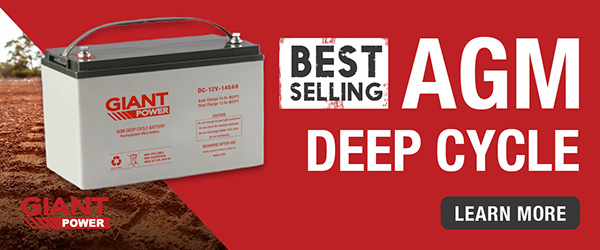
Why the GIANT POWER 140AH AGM is the Best-Selling AGM Deep Cycle Battery in Australia:
This 140AH AGM Battery is best of the best for most 12 Volt Setups and power requirements customers ask for and is an Australian Tier 1 top-rated deep cycle battery product with thousands of 5 star reviews.
 Compatible with all major battery boxes
Compatible with all major battery boxes
 Industry Leading Australian 5 Year Warranty.
Industry Leading Australian 5 Year Warranty.
 Best-quality 12 Year Designed Service Life.
Best-quality 12 Year Designed Service Life.
 High-Quality Bolt Terminal Connections.
High-Quality Bolt Terminal Connections.
 Australian Owned and Operated Company.
Australian Owned and Operated Company.
 Voted best AGM Deep Cycle Battery Australia!
Voted best AGM Deep Cycle Battery Australia!
Aussie Batteries stock the most comprehensive range and best quality AGM Batteries in Australia.
The best traditional or older style Deep Cycle Battery is AGM Batteries, which use thicker battery plates and denser active internal material. Deep Cycle AGM Batteries are designed to withstand repeated charge and recharge cycles and are popular for Australians looking for reliable energy solutions where weight doesn't matter. AGM Deep Cycle Batteries are also known as Absorbed Glass Mat (AGM), and they use technology that suspends the free electrolyte within a highly porous (AGM plate). The plates' quality means the battery is constructed using glass fibre mat separators. AGM battery plates help eliminate the hazards associated with acid spills or leaks. They allow for a sealed maintenance-free design that avoids any need for regular topping-up of an electrolyte. Try our Deep Cycle Calculator to determine your energy requirements free call our team on 1800 853 315
What are the benefits of AGM Deep Cycle Batteries?
AGM Batteries are sealed and are easy and safe to transport. They never need topping up with water. They can be safely mounted inside a boat, car, caravan, motorhome, or recreational vehicle.
Absorbent Glass Mat (AGM) is a deep cycle battery in which the electrolyte is absorbed into a fibreglass mat. You will find that the plates in an AGM Battery are flat like wet cell lead-acid batteries, or they may be wound into a tight spiral. The internal resistance of AGM Batteries is lower than traditional cells; they can handle higher temperatures and self-discharge more slowly than other types of batteries. AGM Deep Cycle Batteries have a release valve activated when the battery is recharged at high voltage. This valve activation allows a small amount of active material to escape. AGM Batteries typically have gas diffusers built into them that allow for the safe dispersal of any excess hydrogen created during charging. The main benefits of AGM Deep Cycle Batteries and their popularity are that they are classed as maintenance-free batteries. Unlike regular lead-acid batteries that should be kept in an upright position avoiding acid spills and to ensuring the plates are sitting in the electrolyte; AGM Deep Cycle Batteries can generally be placed in any orientation, though it always best to speak to an expert to make sure your battery set-up is correct and wont void any warranties. Due to their very low internal resistance AGM Deep Cycle Batteries can fully charge at a lower voltage and accept a much larger load charge current. When charging from a standard car/truck alternator, these batteries may be fully charged in about three hours! AGM batteries can also be discharged 'deeper' than conventional deep cycle batteries without significant damage. For example, AGM Batteries only self-discharge at the rate of up to 3% per month, and even after 12 months sitting idle, as long as they have been cared for, they can be recharged and put back into full service without any significant damage. AGM batteries were originally developed for the military, and because of this, they are very robust.
DEEP CYCLE BATTERIES ARE PERFECT FOR USE IN A RANGE OF APPLICATIONS:
- Run appliances when camping away from power
- Power 12V fridges, lights or any 12V appliances
- Excellent for use with a solar panel for charging
- Perfect for running in a dual battery system
- Superb for use in 4x4 and marine conditions
- Designed Service Life 15 years
- Ideal for frequent cyclic discharge
- Exceptional deep discharge recovery
- Low self-discharge characteristics
LITHIUM BATTERIES ARE EASY TO CARRY AND GIVE USERS INCREDIBLE POWER
Lithium 12V Deep Cycle Batteries are purpose-built for long-use applications if you need reliable energy. Unlike gel or AGM batteries, a LiFePO4 Lithium Battery is exceptionally portable, weighs 50% less, and has a longer shelf-life. Using forward-thinking technology that is powering electric car giants like Tesla. Upgrade to a good LiFePO4 battery that can also withstand any damage without exploding, keeping you and your family and friends safe in any event when you're out exploring the world. LiFePO4 batteries are incredibly safe; they are light and available for various uses. Lithium Deep Cycle Batteries are arguably the safest way to provide power for your camping trip. They don't heat up when charging and discharging and can provide a consistent energy source until the last volt is used.
- Light Weight: About half the weight of an equivalent SLA or AGM battery
- Environmentally Friendly: Non-toxic, contains no acid, can be installed in any direction. Up to 80% capacity for 2,000 cycles in recommended conditions.
- Steady output voltage: no memory effect, vibration and shock resistant, will continue to work efficiently in high temps
- Charge with solar panels on the road
> What is the best set-up for a 36 volt trolling and starting?
We have options available including three 12V 50Ah or 75Ah batteries. Get Expert advice 1800 853 315
> What is the best set-up for a 24 volt trolling and starting?
If you fish tournaments, We suggest anything above 100Ah batteries for trolling and a 140Ah for starting. If you are a weekend fisherman you can use the 50Ah battery. Get Expert advice 1800 853 315
LITHIUM BATTERIES PROVIDE USERS ADVANCED DEEP CYCLE BATTERY LIFE TECHNOLOGY
Deep Cycle AGM Batteries - State of Charge (Technical Information)
Deep Cycle Battery Ratings: Deep Cycle batteries are generally rated in Volts and Amps.
- Amp-hours (Ah) are the rated capacity available in chemical energy inside a battery that is converted into electrical energy.
- Amps also refer to the amount of energy that the battery can store, or, it can be called "the discharge rate". The Discharge rate measures the time it takes to discharge a battery before it needs recharging again.
Here are no-load typical voltages vs state of charge
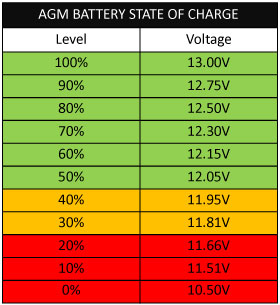
(figured at 10.5 volts = fully discharged, and 25 degrees C).
These Voltages are for a 12-volt battery system. For 24 volt systems, multiply by 2; for 48 volt systems, multiply by 4. These voltages are for batteries that have been at rest for 3 hours or more. Batteries that are being charged will be higher – the voltages while under charge will not tell you anything, and you have to let the battery sit for a while.For the most extended life, batteries should stay in the green zone. Occasional dips into the yellow are not harmful, but continual discharges to those levels will shorten battery life considerably. It is essential to realize that voltage measurements are only approximate. The best determination is to measure the specific gravity, but this is difficult or impossible in many batteries. Note the significant voltage drop in the last 10%.
What Do Deep Cycle Battery Specifications Mean?
Say you’ve got a deep cycle AGM battery and its specifications list that it produces:
100Ah at 20 hours, rated 1000 full cycles at 80% DoD
What does this mean?
Battery Capacity:
- The Amp Hour (Ah) denotes battery capacity and shows how much current can be delivered for a specific time.
- A 100Ah battery at 20 hours means it can produce 5 Amps for 20 hours (100/20 = 5). Deep cycle batteries are typically rated for a 20-hour discharge.
The main thing to understand is that if you’re going to load more appliances, you’ll need a larger AH battery capacity or an upgrade to Lithium for more available energy draw.
- Discharge Cycles
The discharge cycle defines how many times a battery can be discharged and charged without reducing performance or capacity. 1000 full cycles simply mean it can be charged and discharged 1000 times. The more full cycles there are, the longer the battery life.
- Depth Of Discharge
Depth of discharge determines how much of the battery can be discharged safely compared to its original capacity, before it must be recharged. Deep cycle batteries are meant to discharge more of their energy. An 80% DoD means the battery can discharge down to 20% of its capacity.
Lithium Batteries State of Charge (Technical Information)
.jpg)
DOWNLOAD A LITHIUM LiFePO4 Battery Voltage Chart
The voltage of all conventional deep-cycle batteries (as well as AGMs) constantly falls as they discharge. This is typically from 12.75–11.4 volts. The voltage also falls as load increases. Any LiFePO4 deep cycle battery will provide the continuous peak power required. It will also maintain substantially constant voltage regardless of the load. That voltage is likely to be from 13.1–12.9 volts in practice. Readers with a physics background will realise this provides a correspondingly higher output of about 10% (in terms of watt hours).
Lithium Deep Cycle Batteries have multiple advantages over standard AGM batteries for energy storage:
- Substantially Lighter – Lithium-ion batteries are just a fraction of the weight of the original AGM battery.
- More Powerful – Lithium-ion batteries operate at a higher voltage than standard AGM batteries or lead-acid batteries, dropping to just 12.5V when only 20% of the battery capacity is used. Lithium-ion batteries provide over 12.8V even when only 20% is left.
- Low Self-Discharge Rate – Lithium battery chemistry loses less than 3% of charge per month; you can go for several months without worrying.
- Environmental Friendly – Lithium batteries contain no toxic substances. There is no poisonous lead or corrosive sulfuric acid, and as a result, no possible way for an explosive gassing event that is common with lead-acid batteries. In addition, there is no need to maintain acid levels or worry about venting as traditional lead-acid batteries do. Lithium batteries' only maintenance requires ensuring that the battery never drains beyond 90% to ensure optimal life.
- Long-Lasting – Lithium-ion batteries can provide 8-15 years of use, easily exceeding the life of any lead-acid battery. Battery life depends on proper operation and maintenance, so use common sense and ensure the battery does not drain beyond 90% discharge. If you are replacing a lead-acid battery in two years or less due to severe cycling damage, you will save money; in the long run, moving to lithium-ion as the BMS will automatically protect the battery.
- Fast Recharging – Lithium batteries can accept a charge current up to 5 times faster than a lead-acid battery. The charge efficiency is about 75% for lead-acid compared to 97% for a lithium battery. That means less energy is needed to charge.
Charging Your Deep Cycle Battery
Dependable performance and long service life depend upon correct charging. Faulty procedures or inadequate charging equipment result in decreased battery life and unsatisfactory performance. Selecting suitable charging circuits and methods is as important as choosing the correct battery for your application. To obtain maximum service life and capacity and acceptable recharge time and economy, constant voltage-current limited charging is recommended. During charge, for AGM batterues the lead sulfate of the positive plate becomes lead dioxide. As the battery reaches full charge, the positive plate begins generating dioxide causing a sudden rise in voltage due to decreasing internal resistance. Therefore, a constant voltage charge allows detection of this voltage increase and thus control the current charge amount. LITHIUM can be charged by most deep cycle chargers and don't need a special battery charger! Lithium batteries are manufactured with a built-in high-quality battery management system (BMS) that allows for most charger settings (20A)min (except flooded) to be used ** A standard Gel, or AGM charger is safe and suitable but will only charge the battery to 97% >> If you want a lithium specific charger add an ARDENT 12V LITHIUM CHARGER
What’s The Charging Time For Deep Cycle Batteries?
The actual timing depends on several factors, including the battery capacity, age, battery charger, on average, here’s how long they’d take to charge:
- Flooded lead acid battery: 8-16 hours
- AGM Battery: 5 hours
- Gel battery: 5-10 hours
- Lithium Battery: 2-3 hours
Battery Charging and Deep Cycle Battery Maintenance
• Batteries should not be stored in a discharged state or at elevated temperatures. If a battery has been discharged for some time or the load was left on indefinitely, it may not readily take charge. To overcome this, leave the charger connected, and the battery should eventually begin to accept the charge.
• Continuous over-or undercharging is the single worst enemy of any Deep Cycle Battery. Caution should be exercised to ensure that the charger is disconnected after cycle charging or that the float voltage is set correctly.
• For Lithium, it is essential to charge immediately as these batteries are discharged for transportation. Much like your mobile phone battery, you should immediately charge any Deep Cycle Battery before the first use. An AGM battery must be charged within six months after receipt to account for storage from the date of manufacture to the date of purchase. Otherwise, permanent loss of capacity might occur as a result of sulfation. To prolong shelf life without charging, store batteries at 10′C or less.
• Unlimited current charging can cause increased off-gassing and premature drying. It can also produce internal heating and hot spots resulting in shortened service life. Too high a charge current will cause a battery to get progressively hotter. This can lead to "thermal runaway" and destroy a battery in as little as a few hours.
• Caution: Never charge or discharge a battery in an airtight enclosure. Batteries generate a mixture of gases internally. Given the right set of circumstances, such as extreme overcharging or shorting of the battery, these gases might vent into the enclosure and create the potential for an explosion when ignited by a spark. Generally, ventilation inherent in most enclosures is sufficient to avoid problems.
• High voltage strings of batteries in series should be limited to twenty 6 volt or ten 12 volt batteries when a single constant voltage charger is connected across the entire string. Differences in capacity can cause some batteries to overcharge while others remain undercharged, thus causing premature ageing of batteries. It is, therefore, not advisable to mix batteries of different capacities, make, or age in a series string.
• Recharge time depends on the preceding discharge depth and the charger's output current. To determine the approximate recharge time of a fully discharged battery, divide the battery's capacity (amp. hrs) by the rated output of the charger current (amps) and multiply the resulting number of hours by a factor of 1.75 to compensate for the declining output current during charge. If the amount of amp. Hrs. Discharged from the battery is known; use it instead of the battery's capacity to make the calculation.
Overcharging Deep Cycle Batteries:
As a result of too high a charge, excessive voltage current will flow into the battery after reaching full charge, causing decomposition of water in the electrolyte and premature ageing.
At high rates of overcharge, a battery will progressively heat up. It will accept more current as it gets hotter, heating up even further. This is called thermal runaway, and it can destroy a battery in as little as a few hours.
Undercharging AGM Deep Cycle Batteries:
If too low a charge voltage is applied, the current flow will stop before the battery is fully charged. This allows some of the lead sulfate to remain on the electrodes, eventually reducing capacity.
Batteries stored in a discharged state, or left on the shelf for too long, may initially appear to be “open-circuited” or accept far less current than expected. This is caused by a phenomenon called “sulfation”. When this occurs, leave the charger connected to the battery. Usually, the battery will start to accept increasing amounts of current until an average current level is reached. If there is no response, even to charge voltages above recommended levels, the battery may have been discharged for too long to recover.
Capacity & Resistance in Deep Cycle Batteries
Amp-Hour Capacity
All deep cycle batteries are rated in amp-hours. An amp-hour is one amp for one hour or ten amps for 1/10 of an hour. It is amps x hours. If you have something that pulls 20 amps and uses it for 20 minutes, then the amp-hours used would be 20 (amps) x .333 (hours), or 6.67 AH. The generally accepted AH rating time period for batteries for nearly all deep cycle batteries is the “20 hour rate”. A 10Hr rating is widely used in the USA. Therefore many batteries can have 10hr, 20hr or both specifications stated. The 20hr rating means that it is discharged down to 10.5 volts over 20 hours while the actual amp-hours it supplies are measured. Sometimes ratings at the 6-hour rate and 100-hour rate are also given for comparison and different applications. The 6-hour rate is often used for industrial batteries, as that is a typical daily duty cycle. Sometimes the 100-hour rate is given to make the battery look better than it is. Still, it is also helpful for figuring battery capacity for long-term applications like backup, solar, and camping amp-hour requirements.

TESTED everyday by our highly valued Aussie customers who are traveling around Australia and camping in some of the most demanding outback and coastal terrain you can imagine!
We're here to help!
Freecall 1800 853 315
RELIABLE AUSTRALIA WIDE DELIVERY OPTIONS
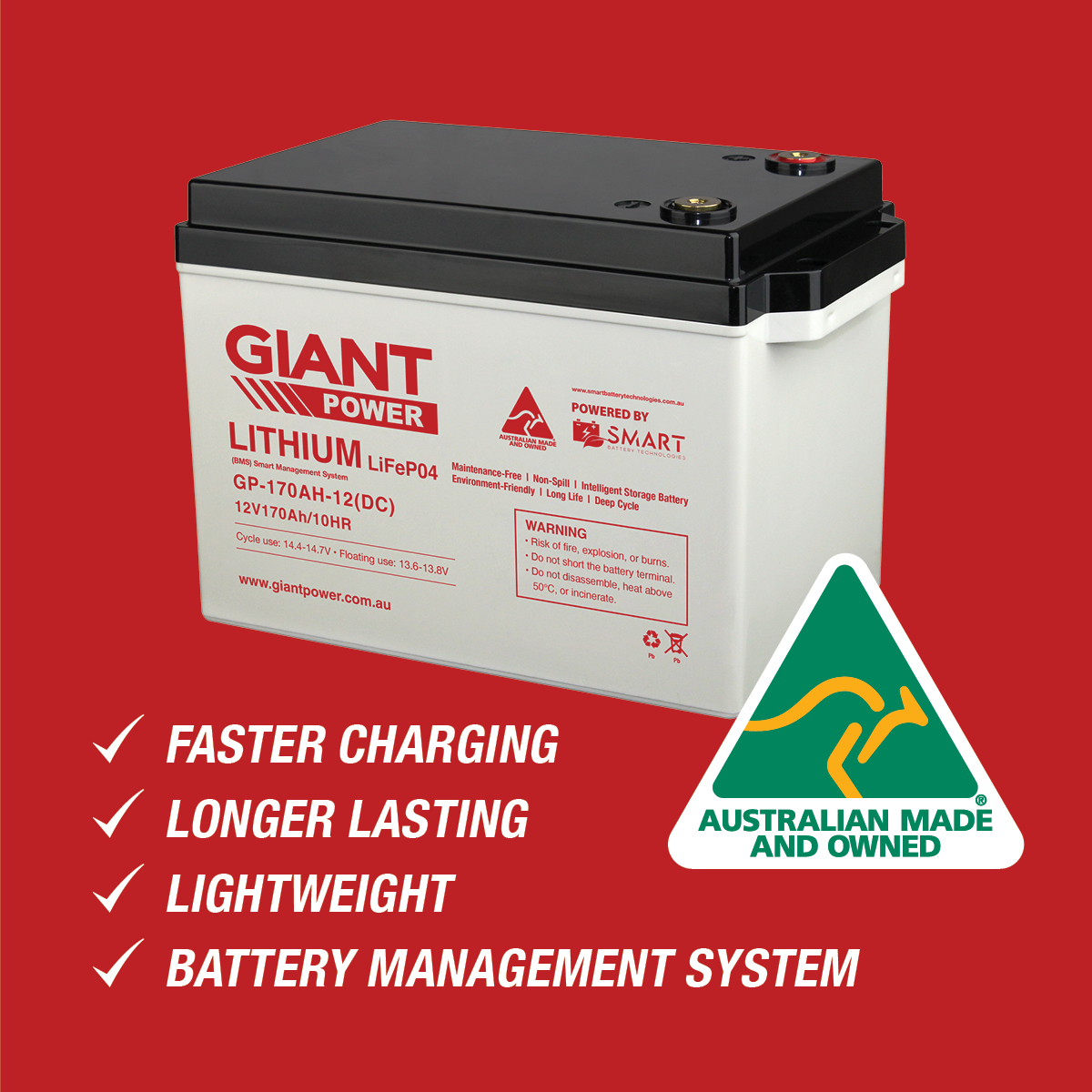
Lithium Battery Vs AGM Battery
All batteries degrade over time, but lithium-ion batteries consistently outlast AGM batteries. Factors like a more significant depth of discharge make lithium-ion batteries more resilient and help these batteries go up to six times the life cycles of AGM alternatives. Choosing the right Deep Cycle Battery for your application is important.The size and type of Deep Cycle Battery that you select is dependent on the application and operating conditions. It is important to ensure there is sufficient battery capacity (Amp Hours) to power the equipment you intend to use.
NEED EXPERT ADVICE
Freecall 1800 853 315
UPGRADING TO A COMPLETE LITHIUM DEEP CYCLE BATTERY SETUP
Comparing Lithium deep cycle to AGM and lead-acid batteries, the benefits quickly stack up. The full Amp Hour capacity of a quality lithium battery can be used without affecting the battery's life span. In contrast, with an AGM or lead acid, it is recommended that you don't discharge below 50%. This means that a lithium battery rated at 100 amp-hours is closely comparable to 200 amp-hours of AGM or lead-acid batteries in terms of usable power. Lithium batteries offer improved functionality over their AGM and flooded alternatives in that they can be discharged to a higher level safely than their counterparts, providing more actual useable Amps. Lithium batteries can be safely discharged to a 100% Depth Of Discharge (DOD) (@10.5v), which provides more useable amps vs. a maximum 50% DOD for an AGM to maintain its cycle life. Lithium batteries cost more than AGM batteries to manufacture, and the price of Lithium is not coming down. As Lithium is an Ore product and traded on the stock market alongside gold, platinum and silver this means that the amount and quality used in batteries and the internals directly affects the production cost of the battery. We are talking about the cell quality and rating, internal (BMS) Battery Management System, and the battery's actual useable capacity.
BEST LITHIUM BATTERY FEATURES
Lithium batteries are rechargeable batteries in which lithium ions move from the anode to the cathode during discharging and back when charging. They are popular batteries for use in consumer electronics because they provide high energy density, possess no memory effect, and slow charge loss when not in use. These batteries come in a wide variety of shapes and sizes. Compared to lead-acid batteries, Lithium batteries are lighter and provide a higher open-circuit voltage, which allows for power transfer at lower currents.
- Lightweight, up to 50% less than a conventional AGM
- Lasts 300-600% longer than lead-acid.
- Lower shelf discharge rate (2% vs. 5-8% /month).
- Drop-in replacement for your AGM battery.
- Expected 12-20 years of battery life.
- No explosive gasses during charging, no acid spills.
- Environmentally friendly, no lead or heavy metals.
- Safe to operate!
The term “Lithium-ion” battery is a general term. Many different chemistries for lithium-ion batteries include LiCoO2 (cylindrical cell), LiPo, and LiFePO4 (cylindrical/prismatic cell). The voltage of all conventional deep-cycle batteries (as well as AGMs) constantly falls as they discharge. This is typically from 12.75–11.4 volts. The voltage also decreases as the load increases. However, any LiFePO4 suitable for (and in) use will provide the peak power required. It will also maintain substantially constant voltage regardless of the load. That voltage is likely to be from 13.1–12.9 volts in practice. Readers with a physics background will realise this provides a correspondingly higher output of about 10% (in terms of watt-hours).
What are LiFePO4 (Lithium Iron Phosphate) Batteries?
Lithium Iron Phosphate (LiFePO4) batteries are a type of lithium battery that provide several advantages. LiFePO4 delivers a much higher specific capacity, superior thermal and chemical stability, enhanced safety, improved cost performance, enhanced charge and discharge rates, enhanced cycle life, and a compact, lightweight package. LiFePO4 batteries offer a cycle life of over 2,000 charge cycles!
WHAT IS A LITHIUM BATTERY BMS ?
Each battery is equipped with an internal BMS - Battery Management System (BMS). The BMS in a lithium battery monitors and optimises each cell during charge and discharge. This protects the battery pack from overcharge, over discharge and short circuit. The BMS also allows the balancing of cells within the batteries allowing them to be configured and used in-parallel to increase battery bank capacity for increased power storage. That is why when buying a battery you should only use a trusted supplier which make choosing the right battery essential. Weight saving is where Lithium Batteries come into their own. An equivalent (useable capacity) Lithium battery will take up ½ of the physical weight space of an AGM battery, which is excellent if you want to hide it somewhere. Alternatively, get double the power for the same area.
Another significant benefit of lithium is that they are considerably lighter than a similar-sized AGM or lead-acid battery. Commonly, most touring vehicles or trailers are overloaded with a whole host of essential things like luggage, accessories, recreational gear, people, and pets, so you can cut down battery weight by up to 50% by choosing lithium batteries, it’s often a no brainer. Especially when multiple auxiliary batteries are part of the system, having a lighter setup can be crucial.
Aside from the weight savings, Lithium batteries also have significantly quicker re-charge vs. AGM batteries. The low resistance in the Lithium cells allows the battery to accept the total output from the charger. With a 30 Amp charger, a 100Ah Lithium battery can be fully charged from flat to full in just over 3 hours vs. 10+ for a 100Ah AGM battery. This is a considerable advantage with solar in that every amp that your solar panels produce goes directly into the battery.
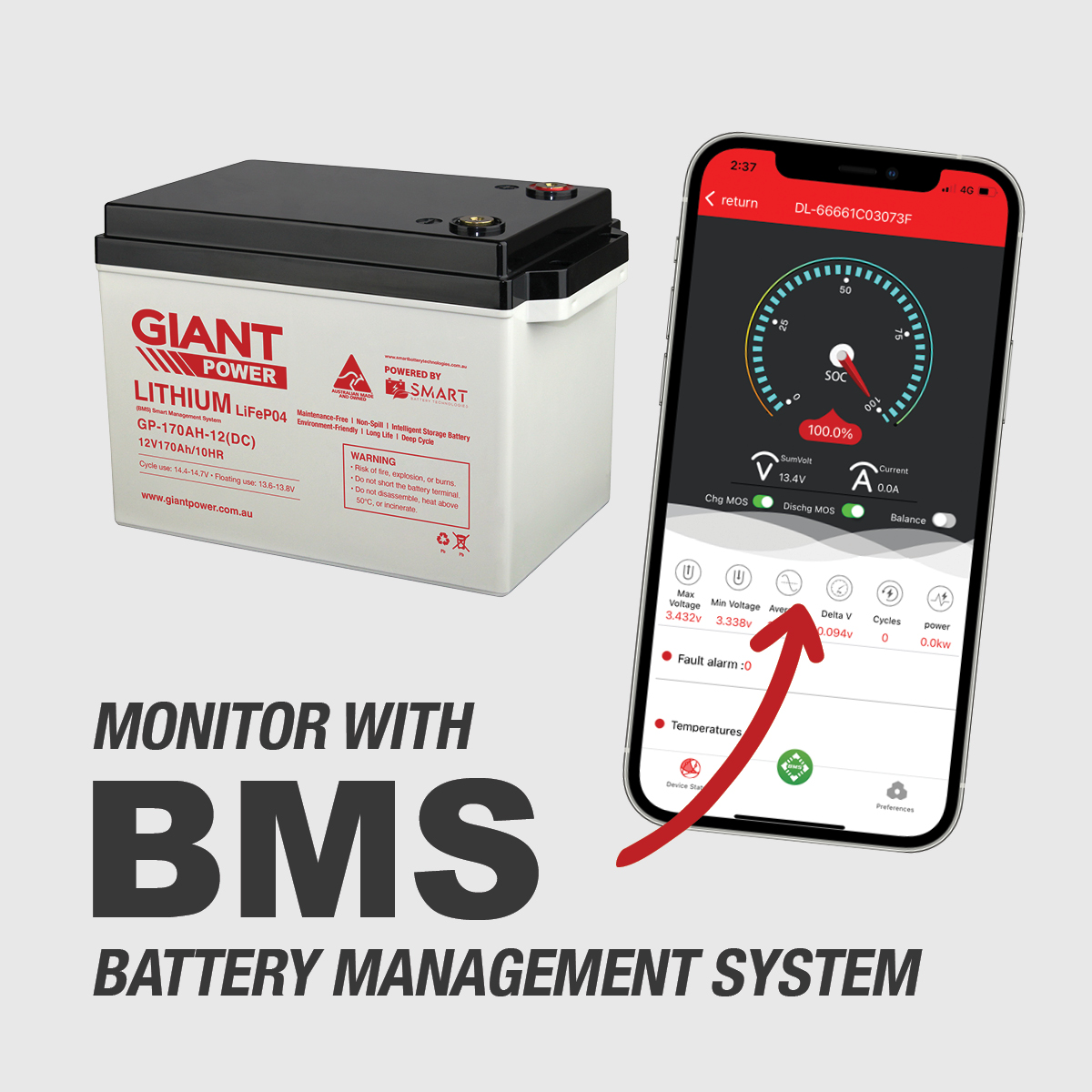
 WANT TO LEARN EVERYTHING ABOUT LITHIUM BATTERIES WE SUGGEST THE BATTERY UNIVERSITY
WANT TO LEARN EVERYTHING ABOUT LITHIUM BATTERIES WE SUGGEST THE BATTERY UNIVERSITY
What happens if I charge my lithium deep cycle battery too high?
If you charge your lithium deep cycle battery above 15V for a 12V battery, the BMS inside the battery terminal will turn off. The cut-off voltage settings will vary slightly depending on current levels, temperature and part tolerances. To turn ON the battery again, disconnect the charging source and let the battery rest for several seconds (~30 sec). It should come on. If the 12V battery has voltages higher than 18V, the internal BMS is damaged and will not turn ON. Battery life for a lithium battery can be enhanced by not discharging the battery to 1Ah capacity or BMS lower voltage cut-off settings. Discharging down to BMS lower voltage cut-off settings can quickly decrease the life of the battery. Instead, we advise discharging down to 20% capacity remaining then re-charging the battery.
WATCH OUR VIDEOS TO LEARN MORE >
Deep cycle batteries are a great source of renewable energy, particularly when they are used in conjunction with a solar charging kit. If you need power, yet you are not tapped into the power grid (I.e.: receiving an electricity bill for the power you’re using) then you need a deep cycle battery. Deep cycle batteries are perfect for:
- Camping and caravanning
- 4WDing
- Off grid living
- Holiday houses
- Mobility scooters
- Golf carts
- Kids ride on cars
- Forklifts
- Boats
- Sheds
- Standby power for Uninterruptable Power Supply (UPS)
Know your current draw & power needs
Before you buy a battery, whether Lithium or AGM, you probably need to consider your maximum current draw, based on all the things you could run off the system. A 100AH battery can run a 1000W inverter (divide wattage by 10 to get the amps required to run the inverter) using 1000W of power. But if using the 1000W load on the inverter, you put the maximum load on your battery, so you'll need bigger batteries if you are running anything else concurrently. If you don't forecast your current draw correctly, your battery may appear to handle the higher draw. Still, in reality, you will cook the battery's cells as it struggles to deliver the power required safely, which may mean you kill your battery much sooner than you should. More AH gives you more energy!
Cycles vs Life - AGM Deep Cycle Battery Technology
A battery “cycle” is one complete discharge and recharge cycle. It is usually considered to be discharging from 100% to 20% and then back to 100%. However, there are often ratings for other depth of discharge cycles, the most common ones are 10%, 20%, and 50%. You have to be careful when looking at ratings that list how many cycles a battery is rated for unless it also states how far down it is being discharged. For example, one of the widely advertised telephone type (float service) batteries have been advertised as having a 20-year life. If you look at the fine print, it has that rating only at 5% DOD – it is much less when used in an application where they are cycled deeper regularly. Those same batteries are rated at less than five years if cycled to 50%. For example, most golf cart batteries are rated for about 550 cycles to 50% discharge, equating to about two years.
Battery life is directly related to how deep the battery is cycled each time. If a battery is discharged to 50% every day, it will last about twice as long as if it is cycled to 80% DOD. If cycled only 10% DOD, it will last about 5 times as long as one cycled to 50%. There are some practical limitations on this – you don’t usually want to have a 5 ton pile of batteries sitting there to reduce the DOD. The most practical number to use is 50% DOD regularly. This does NOT mean you cannot go to 80% once in a while. It’s just that when designing a system, when you have some idea of the loads, you should figure on an average DOD of around 50% for the best storage vs cost factor. Also, there is an upper limit – a battery that is continually cycled 5% or less will usually not last as long as one cycled down 10%. This happens because the Lead Dioxide tends to build up in clumps on the positive plates at very shallow cycles rather than an even film.
Do’s & Donts for proper use of your Deep Cycle Batteries
- Alternators & Deep Cycle Batteries
Alternators & Generators what you need to know about using them with a Deep Cycle Battery
Alternators work reasonably well with AGM batteries in a general car or van. However, they are not battery chargers and will never fully charge a Deep Cycle Battery, so it’s best to use a battery charger when main power is available to top up the battery charge and avoid reduced battery life from sulphation.** Note that alternator output voltages are often reduced by cable/wiring runs and Dual Battery systems, so care needs to be taken to measure the voltage received at the battery across its terminals to ensure its adequate to charge the battery fully charged battery.
Conversely, for Gel batteries fitted close to the alternator (under-bonnet with a thick gauge cabling), there is a real risk of damage due to over-charging as the alternator output can be too high for the battery. For this reason, we highly recommend NOT using GEL batteries with car alternators.
Generators & Deep Cycle Batteries
Many Portable Generators do not have battery charging circuitry built-in and should be used with care if they provide a DC outlet (although you could plug a battery charger into the 240V socket, it seems a relatively inefficient way to operate). The later models (from Honda etc.) with the built-in chargers can provide a reasonably quick and efficient battery top-up on sites where they are allowed (or off-site), although some users do grow tired of the noise and migrate to solar over time.
Learn more about The Best Ways to Charge your Deep Cycle Battery
HIGHEST QUALITY CONSTRUCTION = IMPROVED PERFORMANCE!
Why Deep Cycle Batteries are so popular!!
AGM [Absorbed Glass Mat] VRLA
Sealed Absorbed Glass Mat (Ca/Ca) VRLA deep cycle batteries (also known as "starved electrolyte" or "dry") have a very fine fiber Boron-Silicate glass mat between their flat Lead with Calcium alloy in the positive and Lead with Calcium alloy in the negative plates. The AGM battery was invented in 1980 and first used in military aircraft in 1985.
AGM, or Absorbed Glass Mat Batteries
A newer type of sealed battery uses "Absorbed Glass Mats", or AGM between the plates. This is a very fine fiber Boron-Silicate glass mat. These type of batteries have all the advantages of gelled, but can take much more abuse. These are also called "starved electrolyte", as the mat is about 95% saturated rather than fully soaked. That also means that they will not leak acid even if broken.
AGM batteries have several advantages over both gelled and flooded, at about the same cost as gelled:
- Much safer than wet batteries (due to the hydrogen gas recombination during charging)
- Do not require water.
- Lower self-discharge rate (typically 1%-2% per month)
- Longer service life (approx. 2-3 times life expectancy of Flooded lead acid)
- Higher resistance to vibration
- Lower deep discharge failure
- Less forgiving when accidentally overcharged
- Higher bulk charge acceptance rate (which means up to a 15% shorter recharge time and reduced cost than Flooded lead acid)
- Do not require special hazardous shipping.
- It can be used in saltwater applications
- Spill proof and can be mounted in virtually any position (because they are sealed)
- It can be used inside an enclosed area, like the passenger compartment or trunk
- Greater terminal corrosion resistance
What about Gelled electrolyte
Gelled batteries, or "Gel Cells", contain acid that has been "gelled" by the addition of Silica Gel, turning the acid into a solid mass that looks like gooey Jell-O. The advantage of these batteries is that it is impossible to spill acid even if they are broken. However, there are several disadvantages. They must be charged at a slower rate (C/20) to prevent excess gas from damaging the cells. They cannot be fast charged on a conventional automotive charger, or they may be permanently damaged. This is not usually a problem with solar electric systems, but if an auxiliary generator or inverter bulk charger is used, current must be limited to the manufacturers' specifications. Better inverters commonly used in solar electric systems can be set to limit the charging current to the batteries.
Some other disadvantage of gel cells is that they must be charged at a lower voltage (2/10th's less) than flooded or AGM batteries. If overcharged, voids can develop in the gel, which will never heal, causing a loss in battery capacity. Water loss can be enough over 2-4 years to cause premature battery death in hot climates. For this and other reasons, we sell few lines of the gelled cells. The newer AGM (absorbed glass mat) batteries have all the advantages (and then some) of gelled, with none of the disadvantages.
Starting, Marine & Deep Cycle Batteries
Starting (sometimes called SLI, lighting, ignition) batteries are commonly used to start and run engines. Engine starters need a very large starting current for a very short time. Starting batteries have a large number of thin plates for maximum surface area. The plates are composed of a Lead "sponge", similar in appearance to a very fine foam sponge. This gives a very large surface area, but if deep cycled, this sponge will quickly be consumed and fall to the bottom of the cells. Automotive batteries will generally fail after 30-150 deep cycles if deep cycled, while they may last for thousands of cycles in normal starting use (2-5% discharge).
Deep cycle batteries are designed to be discharged as much as 80% time after time and have much thicker plates. The significant difference between an AGM deep cycle battery and others is that the plates are SOLID Lead plates – not a sponge. This gives less surface area, thus less "instant" power like starting batteries need. Although these can be cycled down to 20% charge, the best lifespan vs cost method is to keep the average cycle at about 50% discharge.
Unfortunately, it is often impossible to tell what you are buying in some of the discount stores or places that specialize in automotive batteries. The golf car battery is quite popular for small systems and RV's. The problem is that "golf car" refers to a size of battery (commonly called GC-2, or T-105), not the type or construction – so the quality and construction of a golf car battery can vary considerably – ranging from the cheap off brand with thin plates up the true deep cycle brands, such as Crown, Powersonic, Trojan, etc. In general, you get what you pay for.
Marine batteries are usually a "hybrid", and fall between the starting and deep-cycle batteries, though a few (Rolls-Surrette and Concorde, for example) are proper deep cycle. The plates may be composed of Lead sponge in the hybrid, but it is coarser and heavier than that used in starting batteries. It is often hard to tell what you are getting in a "marine" battery, but most are a hybrid. Starting batteries are usually rated at "CCA", or cold cranking amps, or "MCA", Marine cranking amps – the same as "CA". Any battery with the capacity shown in CA or MCA may or may not be a true deep-cycle battery. It is sometimes hard to tell, as the term deep cycle is often overused. CA and MCA ratings are at 32 degrees F, while CCA is at zero degree F. Unfortunately, the only positive way to tell with some batteries is to buy one and cut it open – not much of an option.
AGM Battery Plate Thickness
Plate thickness (of the Positive plate) matters because of a factor called "positive grid corrosion". This ranks among the top 3 reasons for battery failure. The positive (+) plate is what gets eaten away gradually over time, so eventually there is nothing left – it all falls to the bottom as sediment. Thicker plates are directly related to longer life, so other things being equal, the battery with the thickest plates will last the longest. The negative plate in batteries expands somewhat during discharge, which is why nearly all batteries have separators, such as glass mat (AGM) that can be compressed.
Automotive batteries typically have plates about .040″ (4/100″) thick, while forklift batteries may have plates more than 1/4″ (.265″ for example, in larger Rolls-Surrette) thick – almost seven times as thick as auto batteries. The typical golf cart will have around .07 to .11″ thick plates. While plate thickness is not the only factor in how many deep cycles a battery can take before it dies, it is the most important one.
Internal Resistance in an AGM Deep Cycle Battery
Part – or most – of the loss in charging and discharging batteries is due to internal resistance. This is converted to heat, which is why batteries get warm when being charged up. The lower the internal resistance, the better. AGM batteries have resistance levels up to 5 times lower than standard batteries. Slower charging and discharging rates are more efficient. A battery rated at 180 amp-hours over 6 hours might be rated at 220 AH at the 20-hour rate, and 250 AH at the 48-hour rate. Much of this loss of efficiency is due to higher internal resistance at higher amperage rates – internal resistance is not a constant – kind of like "the more you push, the more it pushes back". Typical efficiency in a lead-acid battery is 85-95%, in alkaline and NiCad battery it is about 65%. Proper deep cycle AGM's can approach 98%. The 20-hour rate is the most common for standardizing batteries in Australia, while the USA uses a 10-hour rating system.
The lifespan of Deep Cycle Batteries
The lifespan of a deep cycle battery will vary considerably with how it is used, how it is maintained and charged, temperature, and other factors. In extreme cases, it can change to extremes – AGMs can be killed in less than a year by severe overcharging. Gelled cells batteries can be destroyed in one day when overcharged with a large automotive charger. Golf cart batteries can be destroyed without ever being used in less than a year because they were left sitting in a hot garage without being charged. Even the so-called “dry charged” (where you add acid when you need them) have a shelf life of 18 months at most. They are not dry – they are actually filled with acid, the plates formed and charged, then the acid is dumped out. These are typical (minimum-maximum) expectations for batteries if used in deep cycle service. There are so many variables, such as depth of discharge, maintenance, temperature, how often and how deep cycled, etc., that it is almost impossible to give a fixed number. But here goes anyway:
- Starting: 3-12 months
- Marine: 1-6 years
- Golf cart: 2-7 years
- AGM deep cycle: 4-10 years
- Gelled deep cycle: 2-7 years
- Telephone (float): 2-10 years. These are usually special-purpose “float services” but often appear as “deep cycle” on the surplus market. Depending on age, usage, care, and type, they can vary considerably.
- NiFe (alkaline): 5-35 years
- NiCad: 1-20 years
- Lithium: 12-25 years
Inverters for Deep Cycle Batteries
An inverter has two functions – to provide an alternating current (ac) voltage rather than the direct current (dc) available from the battery and raise the voltage up to an average of 240V. There are several types of inverters. The most expensive provide a pure sine wave which is preferred for any sensitive equipment, especially laptops. The cheapest simply provides a square wave ac, which is satisfactory with most motors and small chargers for cameras, phones, etc., but not for most laptop computers. There are also intermediate types, “modified sine wave”, which combine many square waves to approximate a sine wave shape. These are usually satisfactory for laptops but often create a lot of radio interference, like the square wave types. Inverters are about 80% efficient. They come in different sizes. A 300W unit will handle most camp requirements but may have trouble starting a laptop (even though the average drain by the computer is much less than this.) A 300W unit is probably a sensible minimum. Bear in mind that Watts = Volts x Amps, so if we draw the total 300 watts, we will require 25 amps from the 12volt battery, plus 20% to account for inefficiency. That’s 30 amps. This will draw from the battery in 1 hour, about the same as all other loads discussed above take in a day. There are also many larger inverters. A 2000W Inverter will provide enough power to run power tools or even an electric jug, but they will draw about 150-200 amps from the battery at full output. That’s as much current as they winch when fully loaded and way outside the comfort zone of any deep cycle battery for long periods. Most 1500w-2000w applications such as microwaves and electric kettles will only run for a few minutes; this will be fine to use with any 100AH+ battery.
Installing Your Deep Cycle Battery
• Fasten batteries tightly and make provisions for shock absorption if exposure to shock or vibration is likely.
• When installing the battery within a piece of equipment, fix it securely at the lowest possible point.
• The battery should not be attached to any piece of equipment during “burn-in” testing.
• Do not apply undue force to the terminals or bend them. Avoid applying heat to the terminals through processes such as soldering.
• If soldering to the battery terminals is unavoidable, it must be accomplished within 3 seconds, using a soldering iron no greater than 100 watts.
• Do not place batteries close to objects which can produce sparks or flames, and do not charge batteries in an inverted position.
• Avoid exposing batteries to heat! Care should be taken to place batteries away from heat-emitting components. If proximity is unavoidable, provide ventilation. Service life is shortened considerably at ambient temperatures above 30°C.
• To prevent problems arising from heat exchange between batteries connected in series or parallel, it is advisable to provide air space of at least 0.4″ (10mm) between batteries.
• Do not mix batteries with different capacities, different ages or different makes. The difference in characteristics will cause damage to the batteries and possibly to the attached equipment.
• Battery cases and lids made of ABS plastic can sustain damage if exposed to organic solvents or adhesives.
• For best results and generally acceptable performance and longevity, keep operating temperature range between -40′C and 60′C.
• It is good practice to ensure that the connections are re-torqued and the batteries are cleaned periodically.
SAVE ON WEIGHT WITH LITHIUM DEEP CYCLE POWER
LiFePO4 batteries store three to four times the electrical energy of conventional batteries of similar size and weight. This is a major benefit for camper-trailers, caravans, campervans and smaller motorhomes: most have limited space and weight carrying capacity. It’s less of a benefit, however, for converted coaches. Most can readily cope with the weight and volume of a 400-750 Ah AGM battery bank that will easily cope with even major RV loads, and at well under half the price.
UPGRADE YOUR SETUP TODAY
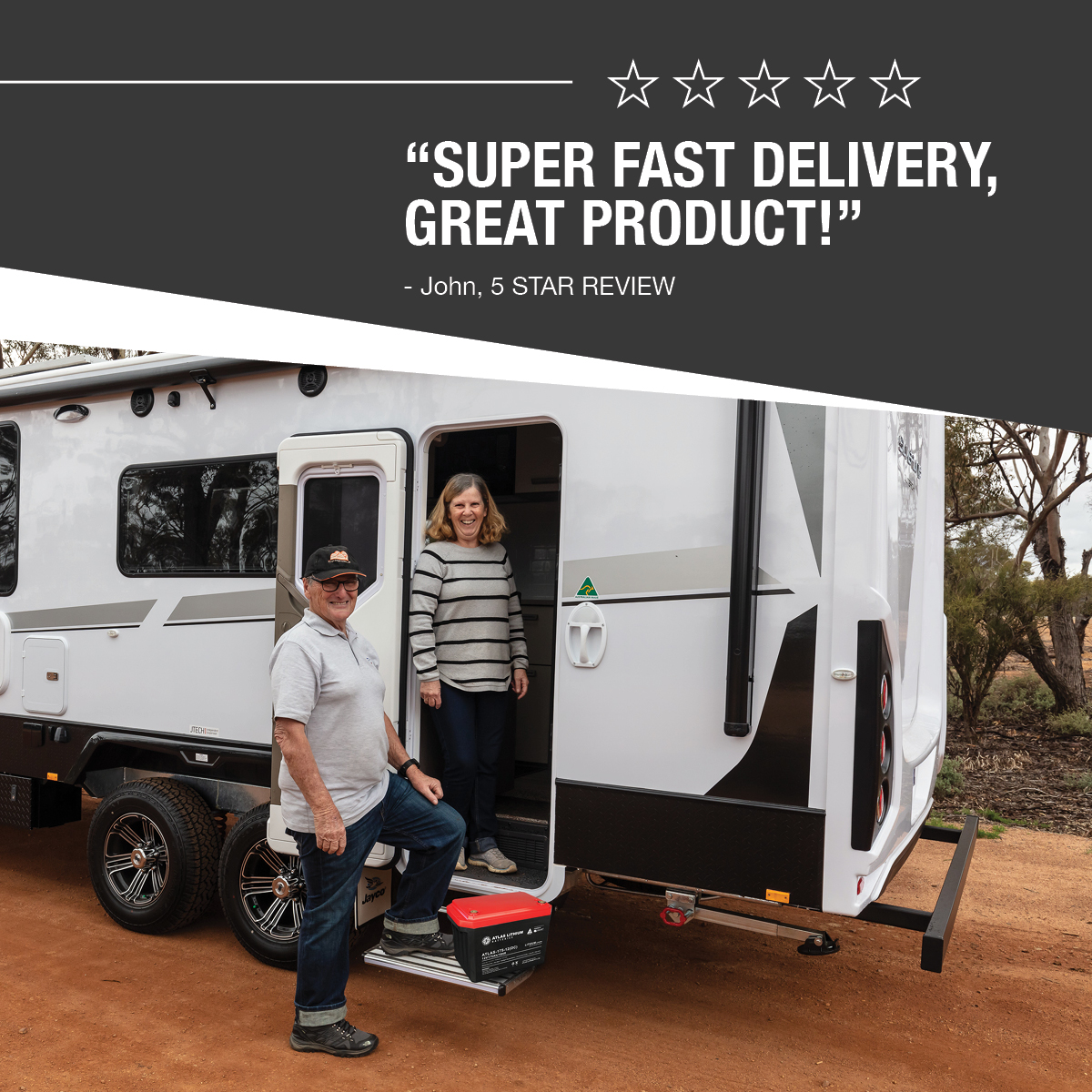 What Are Some Deep Cycle Battery Features To Consider?
What Are Some Deep Cycle Battery Features To Consider?
- Size and weight: Smaller batteries are easier to carry and reduce overall vehicle weight.
- Voltage rating: Higher voltage batteries should be used for larger loads.
- Charging time: The smaller the number, the faster the battery charges.
- Durability: Batteries can be susceptible to extreme temperatures, vibrations, shocks. Pick one suited to your usage.
- Shelf life: The ideal shelf life for a deep cycle battery is 10 years before it loses maximum capacity.
- Charging method: Note how the battery is charged. You can often use a smart charger to help adjust voltage and current.
- Temperature tolerance: Check its ability to deliver power at different temperatures, especially if you live in very hot or extremely cold climates.
Not the exact Battery you're looking for? BROWSE OUR FULL RANGE OF DEEP CYCLE BATTERIES With AUSTRALIA WIDE SHIPPING AVAILABLE - Need Expert Advice - Freecall Now - 1800 853 315 or LEARN MORE ABOUT GETTING THE BEST DEEP CYCLE BATTERY.
 WANT TO LEARN EVERYTHING ABOUT BATTERIES WE SUGGEST YOU CHECK OUT THE BATTERY UNIVERSITY
WANT TO LEARN EVERYTHING ABOUT BATTERIES WE SUGGEST YOU CHECK OUT THE BATTERY UNIVERSITY
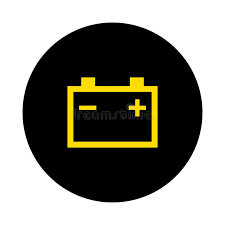

If you'd like to learn more about Deep Cycle Batteries and Solar, take a look at our free Complete Battery and Solar eBook. We've covered a lot of common questions and provided a bunch of good general knowledge information to help you make informed choices when purchasing.
ALL YOU NEED TO KNOW ABOUT
- Deep Cycle Batteries
- Portable Solar Panels
- Portable Fridges
- Generators
- Battery Chargers
- Inverters


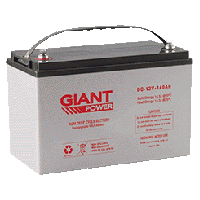
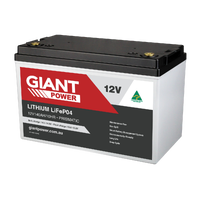
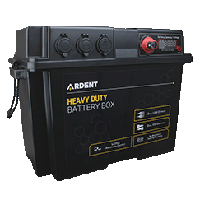
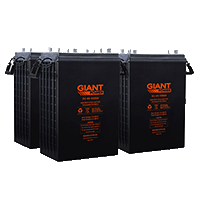
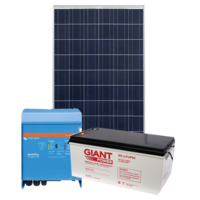
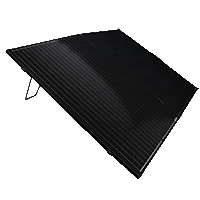


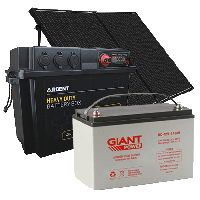



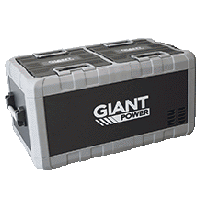
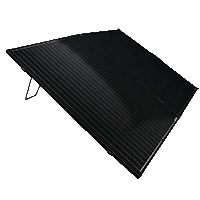
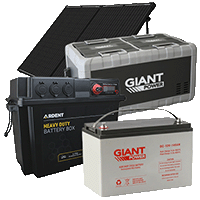





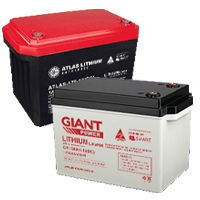
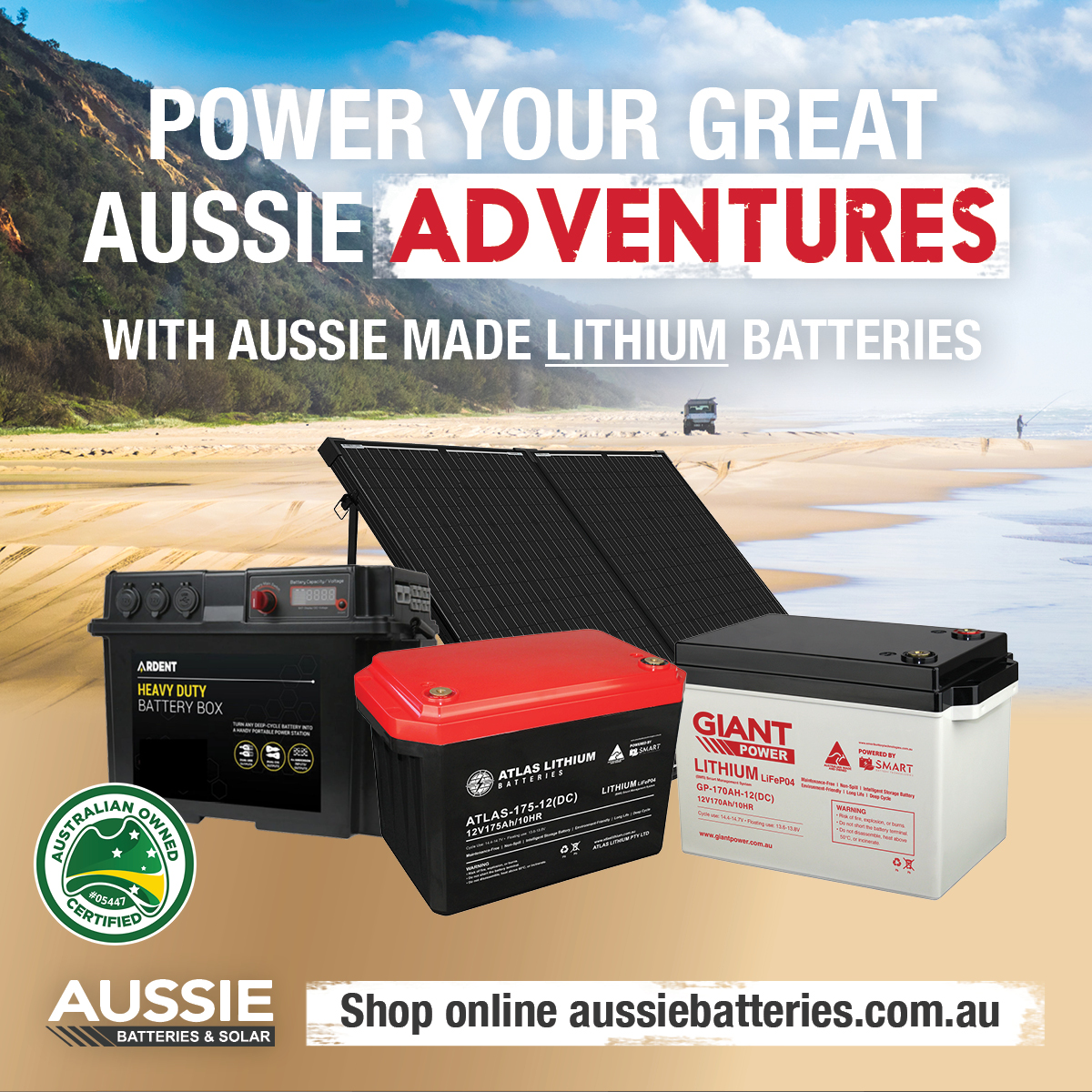
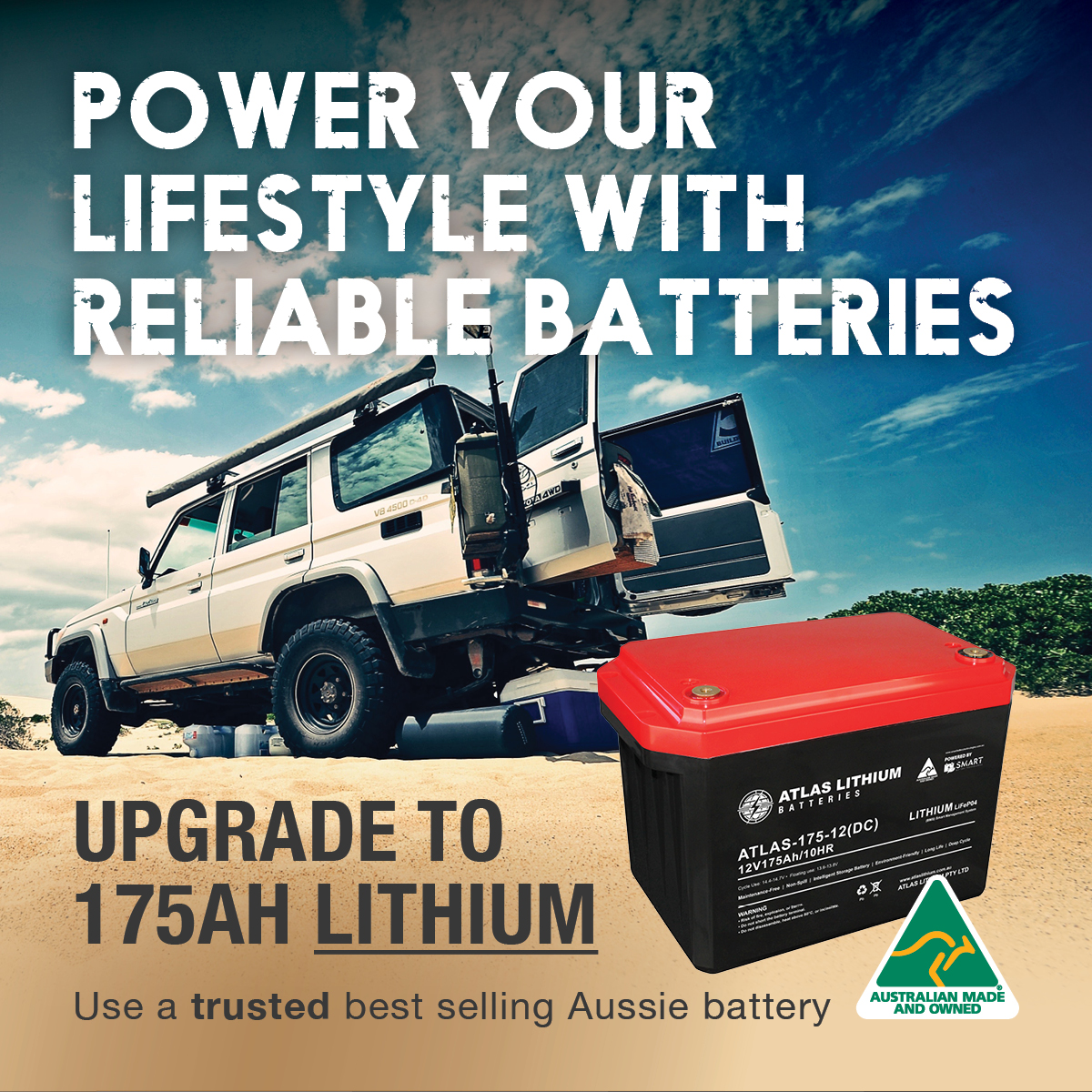
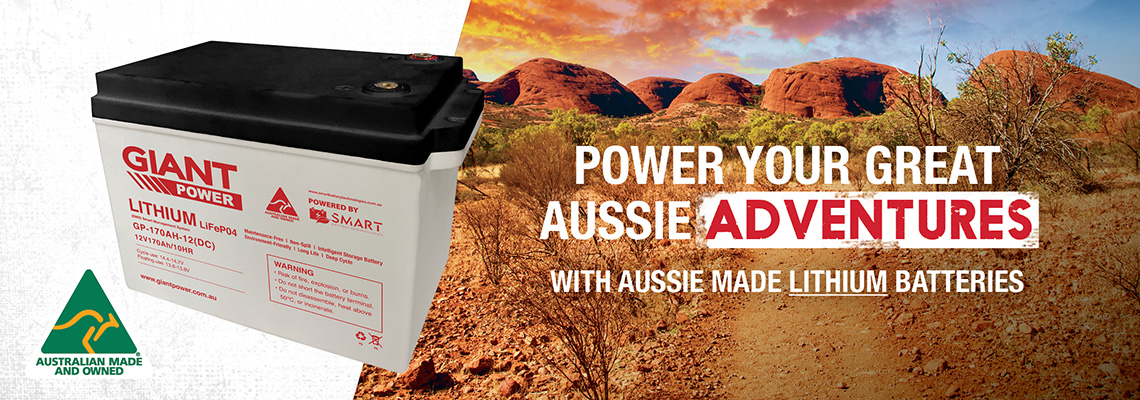
.jpg)
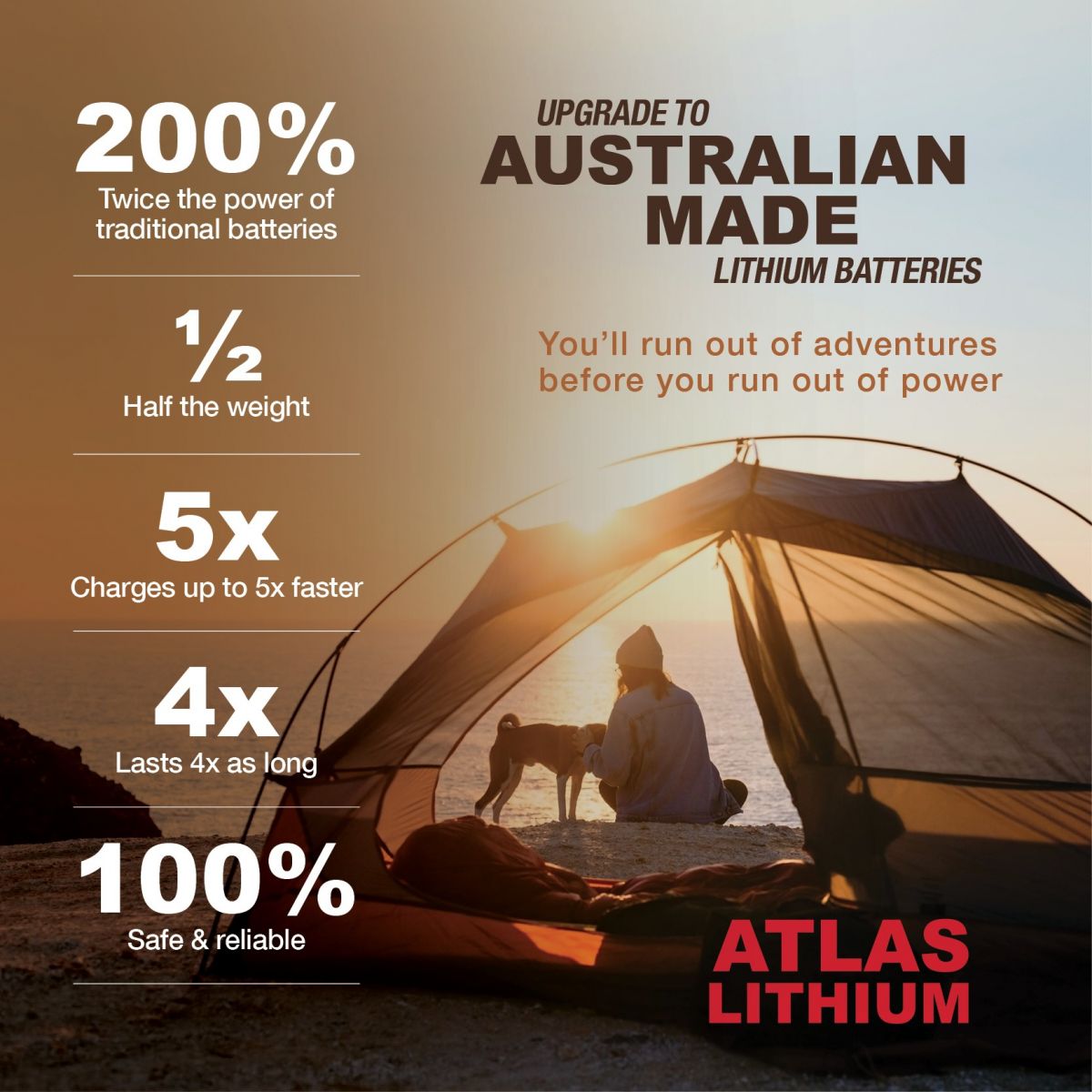
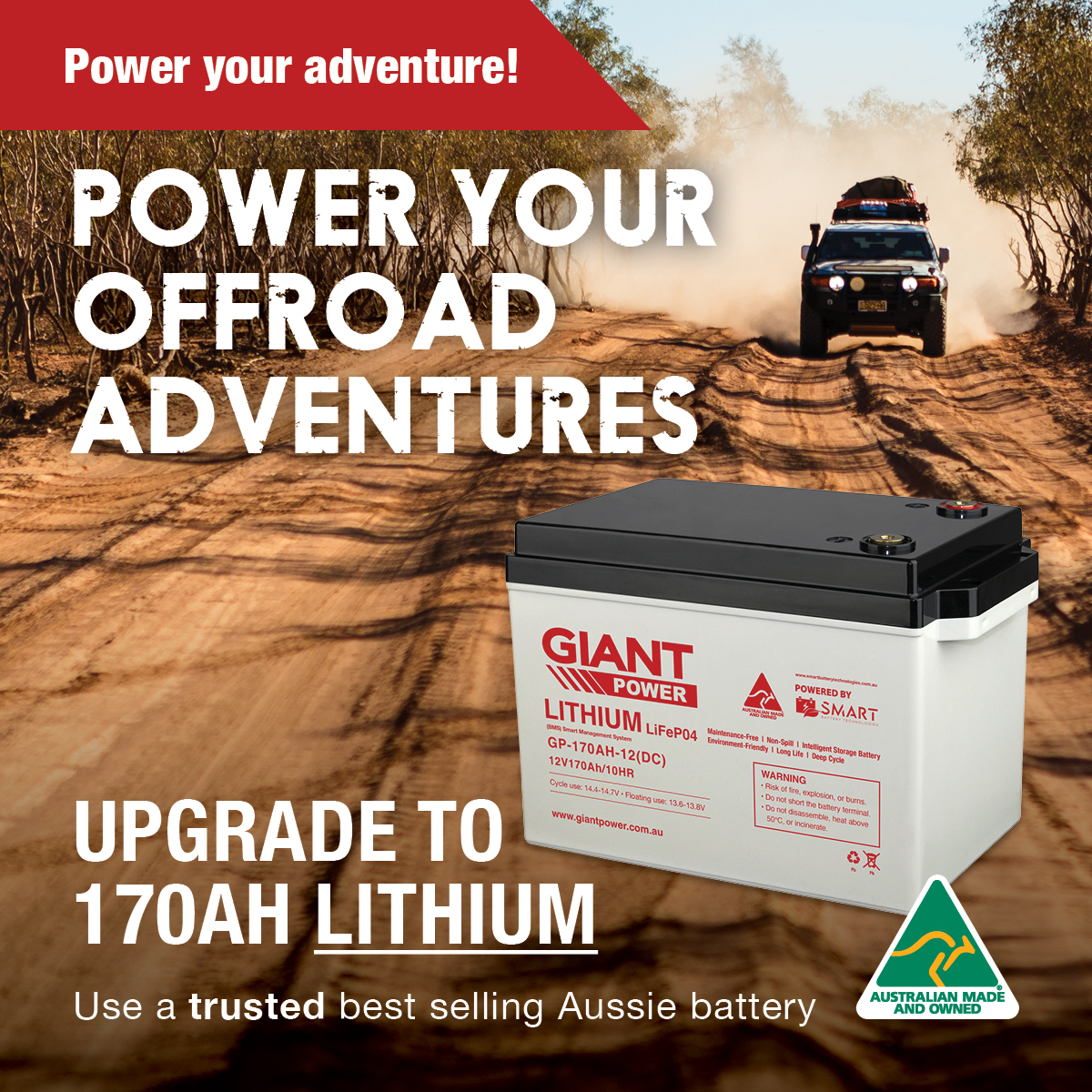
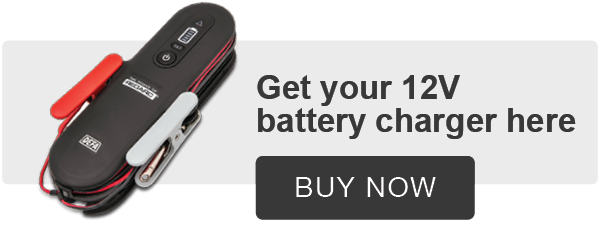
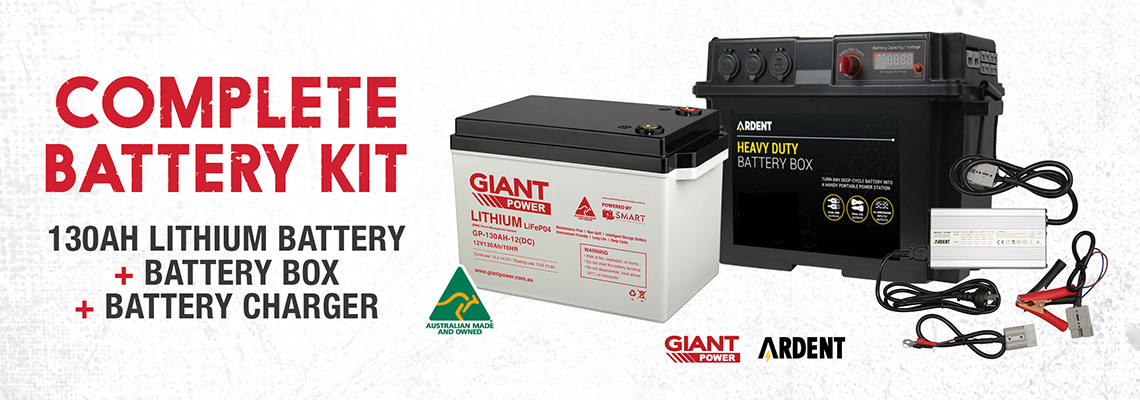
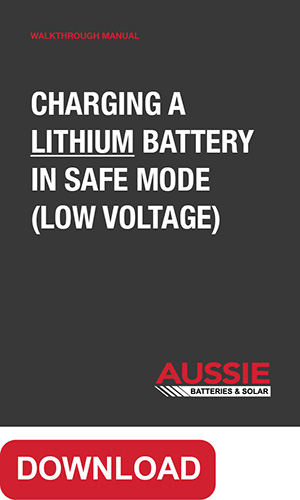
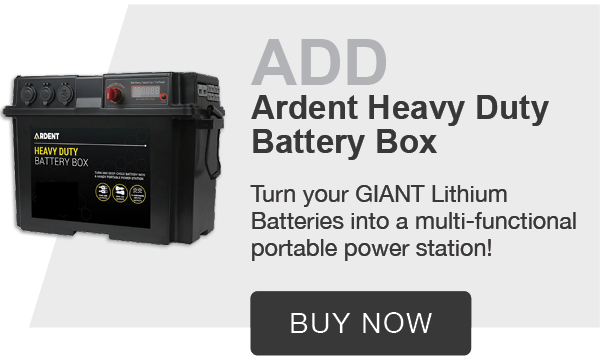
.jpg)
